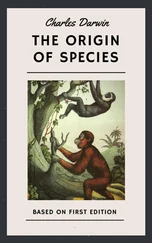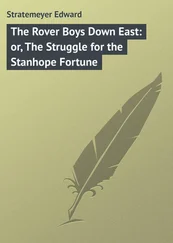Чарльз Дарвин - The Origin of Species by Means of Natural Selection Or, the Preservation of Favoured Races in the Struggle for Life
Здесь есть возможность читать онлайн «Чарльз Дарвин - The Origin of Species by Means of Natural Selection Or, the Preservation of Favoured Races in the Struggle for Life» весь текст электронной книги совершенно бесплатно (целиком полную версию без сокращений). В некоторых случаях можно слушать аудио, скачать через торрент в формате fb2 и присутствует краткое содержание. Год выпуска: 1999, Жанр: Биология, на английском языке. Описание произведения, (предисловие) а так же отзывы посетителей доступны на портале библиотеки ЛибКат.
- Название:The Origin of Species by Means of Natural Selection Or, the Preservation of Favoured Races in the Struggle for Life
- Автор:
- Жанр:
- Год:1999
- ISBN:нет данных
- Рейтинг книги:3 / 5. Голосов: 1
-
Избранное:Добавить в избранное
- Отзывы:
-
Ваша оценка:
- 60
- 1
- 2
- 3
- 4
- 5
The Origin of Species by Means of Natural Selection Or, the Preservation of Favoured Races in the Struggle for Life: краткое содержание, описание и аннотация
Предлагаем к чтению аннотацию, описание, краткое содержание или предисловие (зависит от того, что написал сам автор книги «The Origin of Species by Means of Natural Selection Or, the Preservation of Favoured Races in the Struggle for Life»). Если вы не нашли необходимую информацию о книге — напишите в комментариях, мы постараемся отыскать её.
The Origin of Species by Means of Natural Selection Or, the Preservation of Favoured Races in the Struggle for Life — читать онлайн бесплатно полную книгу (весь текст) целиком
Ниже представлен текст книги, разбитый по страницам. Система сохранения места последней прочитанной страницы, позволяет с удобством читать онлайн бесплатно книгу «The Origin of Species by Means of Natural Selection Or, the Preservation of Favoured Races in the Struggle for Life», без необходимости каждый раз заново искать на чём Вы остановились. Поставьте закладку, и сможете в любой момент перейти на страницу, на которой закончили чтение.
Интервал:
Закладка:
As all the species of the same genus are supposed to be descended from a common progenitor, it might be expected that they would occasionally vary in an analogous manner; so that the varieties of two or more species would resemble each other, or that a variety of one species would resemble in certain characters another and distinct species, this other species being, according to our view, only a well-marked and permanent variety. But characters exclusively due to analogous variation would probably be of an unimportant nature, for the preservation of all functionally important characters will have been determined through natural selection, in accordance with the different habits of the species. It might further be expected that the species of the same genus would occasionally exhibit reversions to long-lost characters. As, however, we do not know the common ancestor of any natural group, we cannot distinguish between reversionary and analogous characters. If, for instance, we did not know that the parent rock-pigeon was not feather-footed or turn-crowned, we could not have told, whether such characters in our domestic breeds were reversions or only analogous variations; but we might have inferred that the blue colour was a case of reversion from the number of the markings, which are correlated with this tint, and which would not probably have all appeared together from simple variation. More especially we might have inferred this from the blue colour and the several marks so often appearing when differently coloured breeds are crossed. Hence, although under nature it must generally be left doubtful, what cases are reversions to formerly existing characters, and what are new but analogous variations, yet we ought, on our theory, sometimes to find the varying offspring of a species assuming characters which are already present in other members of the same group. And this undoubtedly is the case.
The difficulty in distinguishing variable species is largely due to the varieties mocking, as it were, other species of the same genus. A considerable catalogue, also, could be given of forms intermediate between two other forms, which themselves can only doubtfully be ranked as species; and this shows, unless all these closely allied forms be considered as independently created species, that they have in varying assumed some of the characters of the others. But the best evidence of analogous variations is afforded by parts or organs which are generally constant in character, but which occasionally vary so as to resemble, in some degree, the same part or organ in an allied species. I have collected a long list of such cases; but here, as before, I lie under the great disadvantage of not being able to give them. I can only repeat that such cases certainly occur, and seem to me very remarkable.
I will, however, give one curious and complex case, not indeed as affecting any important character, but from occurring in several species of the same genus, partly under domestication and partly under nature. It is a case almost certainly of reversion. The ass sometimes has very distinct transverse bars on its legs, like those on the legs of a zebra. It has been asserted that these are plainest in the foal, and from inquiries which I have made, I believe this to be true. The stripe on the shoulder is sometimes double, and is very variable in length and outline. A white ass, but NOT an albino, has been described without either spinal or shoulder stripe; and these stripes are sometimes very obscure, or actually quite lost, in dark-coloured asses. The koulan of Pallas is said to have been seen with a double shoulder-stripe. Mr. Blyth has seen a specimen of the hemionus with a distinct shoulder-stripe, though it properly has none; and I have been informed by Colonel Poole that foals of this species are generally striped on the legs and faintly on the shoulder. The quagga, though so plainly barred like a zebra over the body, is without bars on the legs; but Dr. Gray has figured one specimen with very distinct zebra-like bars on the hocks.
With respect to the horse, I have collected cases in England of the spinal stripe in horses of the most distinct breeds, and of ALL colours; transverse bars on the legs are not rare in duns, mouse-duns, and in one instance in a chestnut; a faint shoulder-stripe may sometimes be seen in duns, and I have seen a trace in a bay horse. My son made a careful examination and sketch for me of a dun Belgian cart-horse with a double stripe on each shoulder and with leg-stripes. I have myself seen a dun Devonshire pony, and a small dun Welsh pony has been carefully described to me, both with THREE parallel stripes on each shoulder.
In the northwest part of India the Kattywar breed of horses is so generally striped, that, as I hear from Colonel Poole, who examined this breed for the Indian Government, a horse without stripes is not considered as purely bred. The spine is always striped; the legs are generally barred; and the shoulder-stripe, which is sometimes double and sometimes treble, is common; the side of the face, moreover, is sometimes striped. The stripes are often plainest in the foal; and sometimes quite disappear in old horses. Colonel Poole has seen both gray and bay Kattywar horses striped when first foaled. I have also reason to suspect, from information given me by Mr. W.W. Edwards, that with the English race-horse the spinal stripe is much commoner in the foal than in the full-grown animal. I have myself recently bred a foal from a bay mare (offspring of a Turkoman horse and a Flemish mare) by a bay English race-horse. This foal, when a week old, was marked on its hinder quarters and on its forehead with numerous very narrow, dark, zebra-like bars, and its legs were feebly striped. All the stripes soon disappeared completely. Without here entering on further details I may state that I have collected cases of leg and shoulder stripes in horses of very different breeds in various countries from Britain to Eastern China; and from Norway in the north to the Malay Archipelago in the south. In all parts of the world these stripes occur far oftenest in duns and mouse-duns; by the term dun a large range of colour is included, from one between brown and black to a close approach to cream colour.
I am aware that Colonel Hamilton Smith, who has written on this subject, believes that the several breeds of the horse are descended from several aboriginal species, one of which, the dun, was striped; and that the above-described appearances are all due to ancient crosses with the dun stock. But this view may be safely rejected, for it is highly improbable that the heavy Belgian cart-horse, Welsh ponies, Norwegian cobs, the lanky Kattywar race, etc., inhabiting the most distant parts of the world, should have all have been crossed with one supposed aboriginal stock.
Now let us turn to the effects of crossing the several species of the horse genus. Rollin asserts that the common mule from the ass and horse is particularly apt to have bars on its legs; according to Mr. Gosse, in certain parts of the United States, about nine out of ten mules have striped legs. I once saw a mule with its legs so much striped that any one might have thought that it was a hybrid zebra; and Mr. W.C. Martin, in his excellent treatise on the horse, has given a figure of a similar mule. In four coloured drawings, which I have seen, of hybrids between the ass and zebra, the legs were much more plainly barred than the rest of the body; and in one of them there was a double shoulder-stripe. In Lord Morton's famous hybrid, from a chestnut mare and male quagga, the hybrid and even the pure offspring subsequently produced from the same mare by a black Arabian sire, were much more plainly barred across the legs than is even the pure quagga. Lastly, and this is another most remarkable case, a hybrid has been figured by Dr. Gray (and he informs me that he knows of a second case) from the ass and the hemionus; and this hybrid, though the ass only occasionally has stripes on his legs and the hemionus has none and has not even a shoulder-stripe, nevertheless had all four legs barred, and had three short shoulder-stripes, like those on the dun Devonshire and Welsh ponies, and even had some zebra-like stripes on the sides of its face. With respect to this last fact, I was so convinced that not even a stripe of colour appears from what is commonly called chance, that I was led solely from the occurrence of the face-stripes on this hybrid from the ass and hemionus to ask Colonel Poole whether such face-stripes ever occurred in the eminently striped Kattywar breed of horses, and was, as we have seen, answered in the affirmative.
Читать дальшеИнтервал:
Закладка:
Похожие книги на «The Origin of Species by Means of Natural Selection Or, the Preservation of Favoured Races in the Struggle for Life»
Представляем Вашему вниманию похожие книги на «The Origin of Species by Means of Natural Selection Or, the Preservation of Favoured Races in the Struggle for Life» списком для выбора. Мы отобрали схожую по названию и смыслу литературу в надежде предоставить читателям больше вариантов отыскать новые, интересные, ещё непрочитанные произведения.
Обсуждение, отзывы о книге «The Origin of Species by Means of Natural Selection Or, the Preservation of Favoured Races in the Struggle for Life» и просто собственные мнения читателей. Оставьте ваши комментарии, напишите, что Вы думаете о произведении, его смысле или главных героях. Укажите что конкретно понравилось, а что нет, и почему Вы так считаете.












